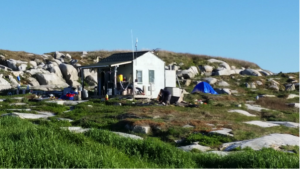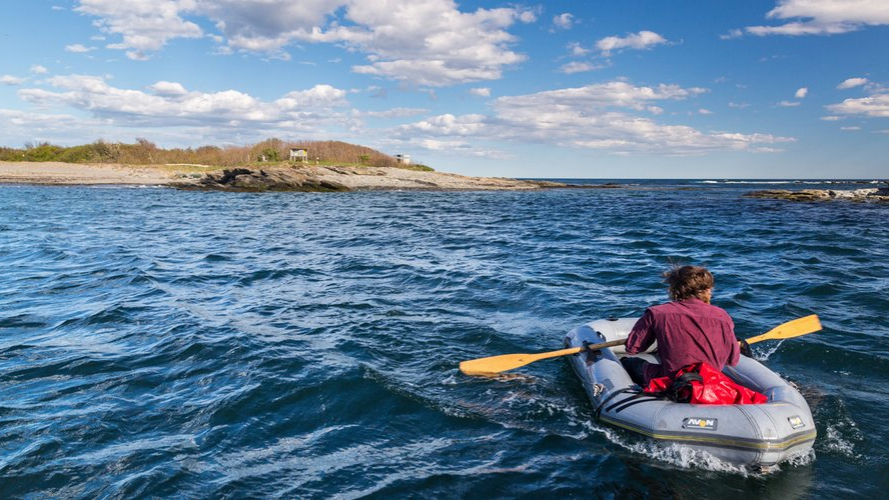Project Puffin Education Intern Liam Berigan has spent the past few weeks on Maine’s Seal Island, home of the Puffin Loafing Ledge and Boulder Berm cams, counting gull eggs, sighting birds from blinds, and performing other research tasks. He guides us through a typical day working on the remote outpost.
“If you’re paying close attention to the Puffin Loafing Ledge and Boulder Berm cams, you might occasionally see researchers walking through the cameras’ line of vision. 31 years ago, the original Project Puffin research teams began managing Seal Island National Wildlife Refuge so that puffins could one day come back to the island. Research teams continue work on the island to this day, conducting experiments and scaring away predators so that the puffin and tern populations on Seal Island continue to grow.
Seal Island is roughly a mile long, and enjoys relative isolation in the middle of the Gulf of Maine. The island is closed to visitors, except for a five-person Audubon research team that camps on the island from May until October.
 Because of the number of seabirds that use the island for nesting, the Audubon team does its best to minimize the ecological footprint of their activities. The island’s single building (a 12 foot x 12 foot cabin) is used for food storage and preparation, so researchers and interns on the island live out of tents on raised wooden platforms. All food and supplies for the research team are shipped out via lobster boat, which comes out to the island about once every two weeks.
Because of the number of seabirds that use the island for nesting, the Audubon team does its best to minimize the ecological footprint of their activities. The island’s single building (a 12 foot x 12 foot cabin) is used for food storage and preparation, so researchers and interns on the island live out of tents on raised wooden platforms. All food and supplies for the research team are shipped out via lobster boat, which comes out to the island about once every two weeks.
A typical day for a Seal Island researcher might start at 8am with a three hour bird resighting stint. Researchers will pack off to plywood blinds, which have been set up across the tern colony, and use their spotting scopes to read the bands of terns that are nesting or puffins that are loafing. By tracking individual puffins and terns using these bands, we can tell how many birds are coming back to the island year-after-year, and we can determine where our new arrivals are coming from.
After their resighting stints, researchers will work on a variety of scientific projects. Counting gull and eider eggs, collecting geolocator data from puffins, and constructing new cameras all help to expand our scientific knowledge of seabirds. When chicks hatch later in the season, researchers will also watch from blinds to find out what kinds of food terns and puffins are bringing back to their chicks, and determine how it affects their health.
The research team will be stopping by the Puffin Burrow Cam comments section frequently this summer. We’ve been gratified to hear the support and well wishes of the puffin-watching community, which has grown so attached to our residents Finn and Phoebe. Say hi if you see us on the discussion boards!”



